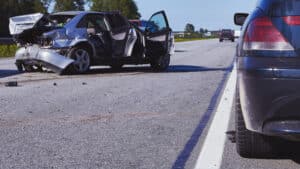Written By: Chris Dolan and Allison Stone
This week’s question comes from Andie in San Francisco, who asks: Spring is upon us, and more and more of us ride our bicycles outside. What are some simple tips for riding our bicycles safely?
Andie,
“Bicycle Safety Month” and “Bike To Workday” are both in May so it is a great time to review some of the safety tips. While bicycling is a great means of transportation and exercise, it can also be quite dangerous if cyclist don’t take certain precautions. Unfortunately, collisions between cyclists and motorists are common and often result in serious personal injuries.
According to the DMV, over 100 bicyclists are killed, and over 10,000 are injured yearly in California collisions. Bicyclists have the same responsibilities as motorists. It is important to remember the following safety tips every time you ride a bike:
ALWAYS WEAR A HELMET WHILE BICYCLING
The basic law in California is that: bicyclists aged 18 and older riding on a street, bikeway, or any other public bicycle path, sidewalk, or trail are not required to wear a bicycle helmet while riding a bike, while bicyclists under the age 18 riding on the street, bikeway, or any other public bicycle path, sidewalk, or trail are required to wear an approved, properly fitted and fastened bicycle helmet, both while operating a bicycle and while riding as a passenger, including a restraining seat attached to a bicycle or in a trailer towed by a bicycle. California Vehicle Code Section 21212(a).
In other words, for adult bicyclists, no law requires using a helmet, but for those under 18, helmet use is mandatory except while bike riding on private property.
Nevertheless, we strongly recommend that minors and adults wear bike helmets in every situation. Helmets can reduce the risk of head and neck injury in a bicycle versus auto collisions.
It is also essential to know and understand that although adults are not required to wear a helmet in California if injured in an accident while riding without a helmet, even where the other person or driver is at fault, the lack of a helmet is likely to be an issue in your case and the other driver will argue that you should are responsible for all or at least a portion of your injuries due to your failure to wear a helmet.
Remember, helmets have an expiration date. They can degrade over time, so be sure to replace them when it is time for a new one. Consider replacing the helmet in a collision, even if you do not see damage.
ALWAYS USE LIGHTS, REFLECTORS & BRIGHT CLOTHING
One of the most important tips for bike riders is that you want to be noticeable to drivers. Bikes are significantly smaller than cars and, therefore, inherently far less evident to drivers.
Using lights and reflectors at night is the law. Lighting includes but is not limited to a front lamp emitting a white light visible from 300 feet in front and the sides of the bicycle and a rear red reflector or a solid or flashing red light with a built-in reflector visible from 500 feet. Be sure to refer to California Vehicle Code Section 21201 which sets forth the specific requirements for all the reflectors and lights required on the bike.
Further, the California Vehicle Code sets forth a minimum requirement. You always want to do whatever you can to make yourself more visible.
A bright front headlight paired with a blinking taillight enhances visibility, particularly if you commute on your bike. Reflective tape and stickers for your bike and helmet are also a good idea to make you more conspicuous.
Additionally, wearing bright clothing such as orange and yellow helps drivers see you from farther distances and especially in busy areas, at night, and in bad weather (dawn, dusk, gloom, or fog). Avoid wearing dark clothing when it is dark outside.
MISCELLANEOUS TIPS FOR BIKE RIDING SAFELY
First and foremost, always obey traffic laws, including signaling, obeying traffic lights and signs, and do not jump or attempt to beat a red light. Riding predictably and lawfully allows other drivers to predict your behavior and avoid a collision due to conduct that is out of the ordinary or unexpected.
As with driving an automobile, always be alert and aware of your surroundings and the conditions around you. Do your best to assess potential impediments, obstructions, and other negligent drivers on the road. Many accidents occur at junctions and intersections, so take extra steps, such as making eye contact with the other drivers on the road, to ensure you are seen in these areas, including crossings. Be sure to look over your shoulder before turning or changing lanes. Also, use your bell to warn other bicyclists and pedestrians of your presence. Never assume others see you.
Try to ride a door’s width from parked cars to avoid a car door opening in your path and hitting you.
Remember to remain distraction-free—do not text or look down at your phone. Avoid riding and wearing headphones to ensure you can hear everything around you. You do not want to be doing anything or listening to anything which may prevent you from seeing or hearing your surroundings.
Always keep both hands on the handlebars.
Do not consume alcohol when riding a bike.
Ensure your bike is in good, roadworthy condition, including maintaining the brakes and tires. Before riding, always check to make sure the brakes, lights, bell, and reflectors are working properly.
Auto versus bicycle collisions can have severe consequences for bicyclists. Keep these tips in mind to stay safe.










